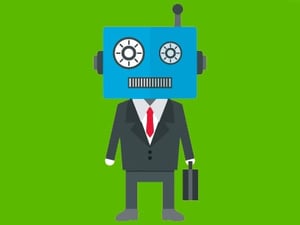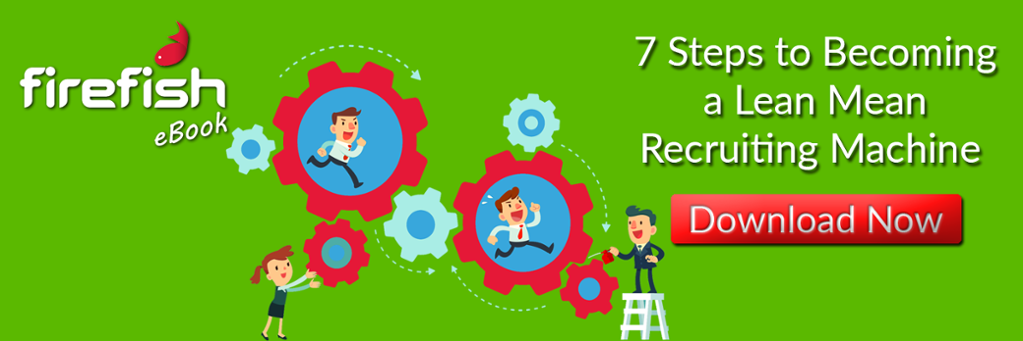Recruitment AI is a hot topic at the moment, but is it going to transform the industry as much as we’ve been told? And can recruitment AI hold up in a GDPR world? Let’s take a look at what recruitment AI looks like now, what it's set to look like in the near future, and what this means for recruitment.
AI in recruitment: What is it?
 Using AI for recruitment involves applying artificial intelligence (aka the ability for a piece of technology to apply learning or problem solving) to a recruitment task.
Using AI for recruitment involves applying artificial intelligence (aka the ability for a piece of technology to apply learning or problem solving) to a recruitment task.
AI has been introduced into the recruitment industry with a focus on automating high-volume or repetitive tasks, and as recruitment involves a lot of time-consuming admin, it’s easy to see it has big potential for the industry!
Naturally, many recruiters worry that this implies AI will eventually put them out of a job, but we all know this isn’t the case. Recruitment will always be primarily about people and relationships, and technology can’t replace that. What AI technology can do for recruitment is replace the unskilled aspects of the recruitment process, giving recruiters more space to focus on strengthening their relationships and improving industry knowledge – in other words, allow them to become better recruiters.
What recruitment AI looks like now
If all the AI recruitment hype unsettles you, consider this: The very best recruiters are already using AI in its most basic form! There’s a lot of recruitment tech out there that reduces operational burden by automating low-level recruitment tasks, such as:
Recruitment software
Any forward-thinking recruitment business will already be using good recruitment software to maximise efficiency in their processes. CRMs are able to automate low-level admin tasks so recruiters can focus on building great relationships and making judgements and decisions where technology falls short. This is a good example of how automation will supplement and support recruiters to be better at their jobs – not replace them.
Auto-screening candidates
52% of Talent Acquisition leaders say the hardest part of recruitment is screening candidates from a large applicant pool. With CVs hitting recruiter desks in their hundreds each week, it’s no surprise that the amount of time allocated to each CV gets continuously squeezed lower.
However, there’s already AI technology available that automatically searches through candidate profiles and disqualifies enough to give recruiters a handful of highly relevant and qualified candidates for consideration. So the AI technology is already there – this isn’t something new!
Google for Jobs
Google for Jobs has already rolled out in the US, and should be live in the UK before the end of this year. Google for Jobs is a job-searching tool that uses machine learning and algorithms to find opportunities that are most relevant to a candidate’s online browsing and behaviour.
The tool takes factors into consideration such as your IP address/location, your browsing history and which recruitment agency websites you’ve used before in order to present results that are most useful and relevant to each candidate.
Read our guide to find out if your recruitment website is Google for Jobs ready.
Programmatic advertising and retargeting pixels
Both of these advertising strategies allow you to automatically create lookalike audiences based on those who visit your job pages and target them with similar jobs. This is a good example of where AI is being used to perform tasks that recruiters wouldn’t be able to do themselves. If you’d like to learn more about programmatic and retargeting, watch this.
What recruitment AI will look like in the near future
Now that we’ve had a quick look at how AI is already being used in recruitment, let’s consider what route it’s set to take in the near future as new tech appears on the market, and how this could affect the recruitment industry.
Recruitment chatbots are already becoming a popular initial point of contact for businesses recruiting in areas of high supply, and it’s likely they’ll become ubiquitous for this type of recruitment in due time.
Recruiting in areas of high supply requires a lot of slog, communicating with hundreds of candidates just to fill one role. Therefore, integrating a chatbot recruiter on your website or social media page to gather data and direct candidates to the appropriate job pages can increase time-to-hire massively. If you're interested in finding out more about how recruiters are using chatbots in their processes, check out this crowdcast.
And remember that this is only to speed up the initial touch point with candidates. Recruiters will still be required to pick up where the chatbot has left off, so your job is still safe!
AI Personal Assistants is a term used to describe tools that integrate with tech you already use to make your job that bit easier. For example, X.ai is a software that manages your schedule and helps you book candidate interviews practically without thinking. All you have to do is pop the AI PA’s name into CC and it will automatically search all recipients’ calendars and choose the most convenient time slot.
AI assisted Video interviews will reveal a lot more thanks to facial recognition technology. Initial interviews could be performed by computers, with advanced facial recognition technology to read things like confidence, stress and body language. Apparently this kind of software will be good at removing any unconscious bias on the part of the recruiter, but should candidates really be judged on their stress levels?
Can recruitment AI survive GDPR?
A lot of the technology used in recruitment AI is based on profiling trends, meaning GDPR roll out could present a few hurdles for new tech entering the market. Any profiling needs to be compliant, and this could prove more difficult than many have anticipated.
A new policy has even been created by the UK government in attempt to guide AI tech towards data compliance. It states: “Artificial intelligence should not be used to diminish the data rights or privacy of individuals, families or communities”.
Sounds easy enough, but as AI bases much of its performance on what it initially learns from humans, this runs the risk of replicating subconscious bias which can lead to candidates being discriminated against.
For example, if during a CV screening process you disqualified a couple of candidates because they lived abroad and you didn’t have a relocation budget available to you, the software could automatically begin disqualifying every applicant with a foreign name based on that initial action, which would lead to a discrimination based on profiling.
At core, recruitment is all about building strong and lasting relationships – so no matter how sophisticated a chatbot can be, it can’t replace the recruiter during the hiring process. The more time you have to spend on nurturing your candidate and client relationships and the less you have to spend on monotonous admin tasks, the better a recruiter you’ll be. So the main message to take from this is, in a nutshell, keep calm and carry on recruiting!
Download the eBook below to find out how to begin automating your recruitment process so you operate as a lean, mean recruiting machine!
Joanne Causer
Joanne is a Senior Growth Specialist at Firefish. She loves bringing on board new recruiters who are looking to recruit smarter.




